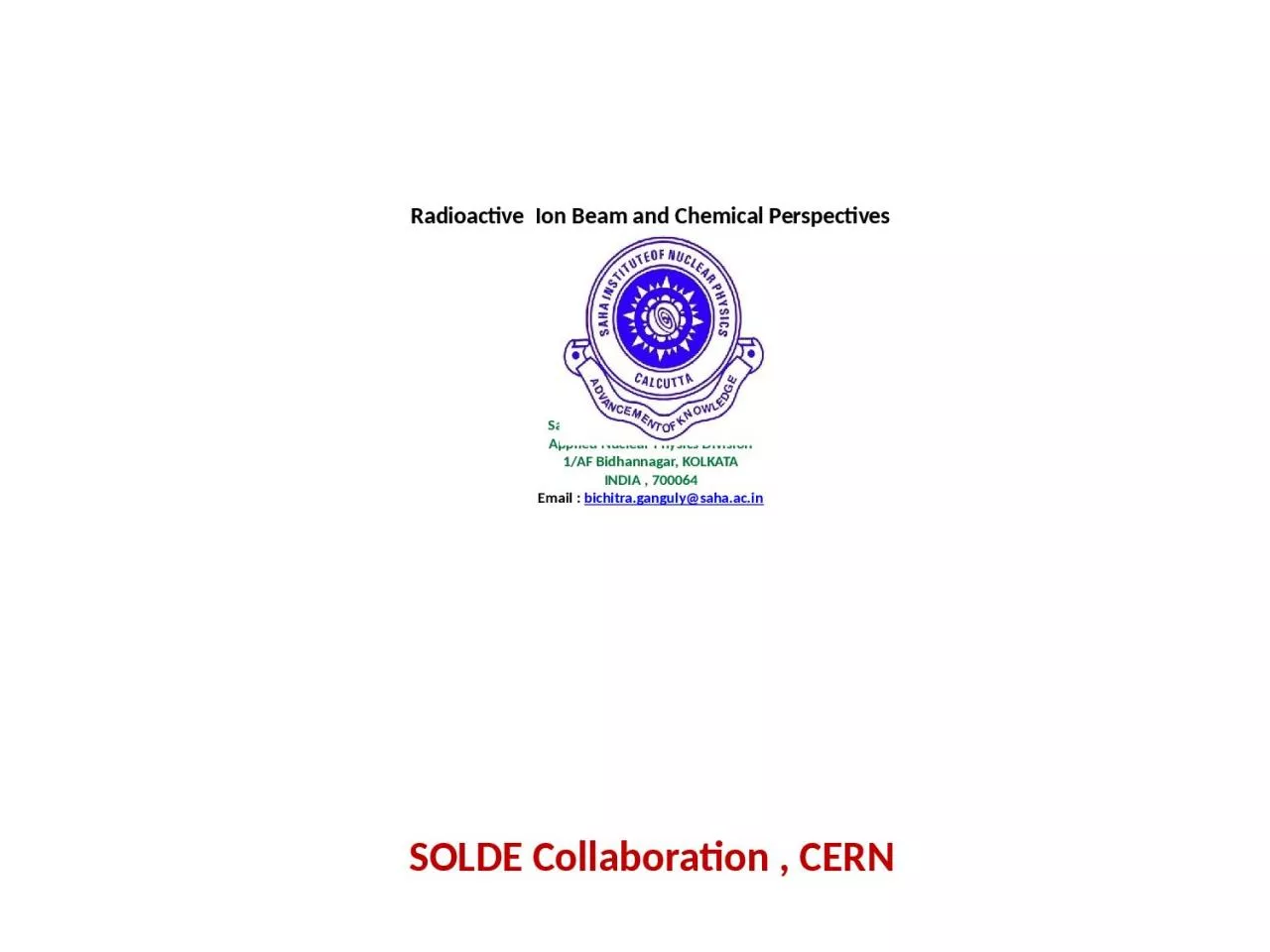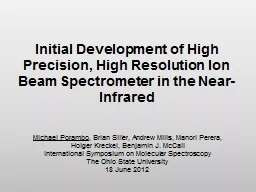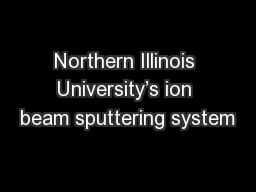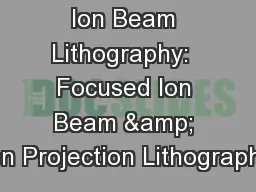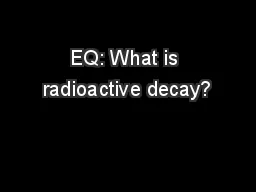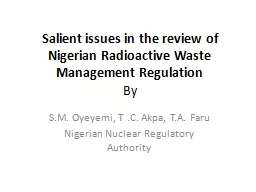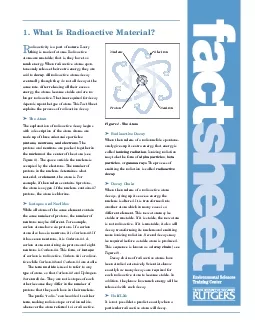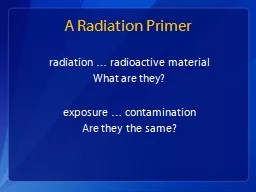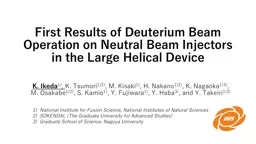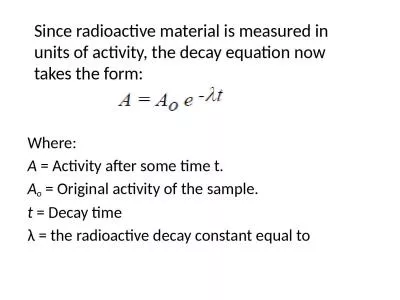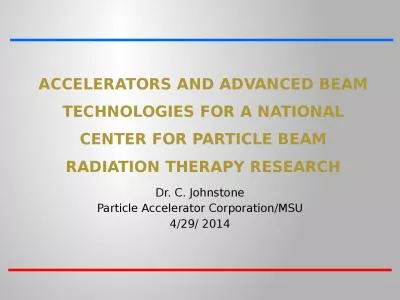PPT-Radioactive Ion Beam and Chemical
Author : WatercolorWanderlust | Published Date : 2022-07-28
Perspectives Bichitra Ganguly Saha Institute of Nuclear Physics Applied Nuclear Physics Division 1AF Bidhannagar KOLKATA INDIA 700064 Email bichitragangulysahaacin
Presentation Embed Code
Download Presentation
Download Presentation The PPT/PDF document "Radioactive Ion Beam and Chemical" is the property of its rightful owner. Permission is granted to download and print the materials on this website for personal, non-commercial use only, and to display it on your personal computer provided you do not modify the materials and that you retain all copyright notices contained in the materials. By downloading content from our website, you accept the terms of this agreement.
Radioactive Ion Beam and Chemical: Transcript
Download Rules Of Document
"Radioactive Ion Beam and Chemical"The content belongs to its owner. You may download and print it for personal use, without modification, and keep all copyright notices. By downloading, you agree to these terms.
Related Documents

